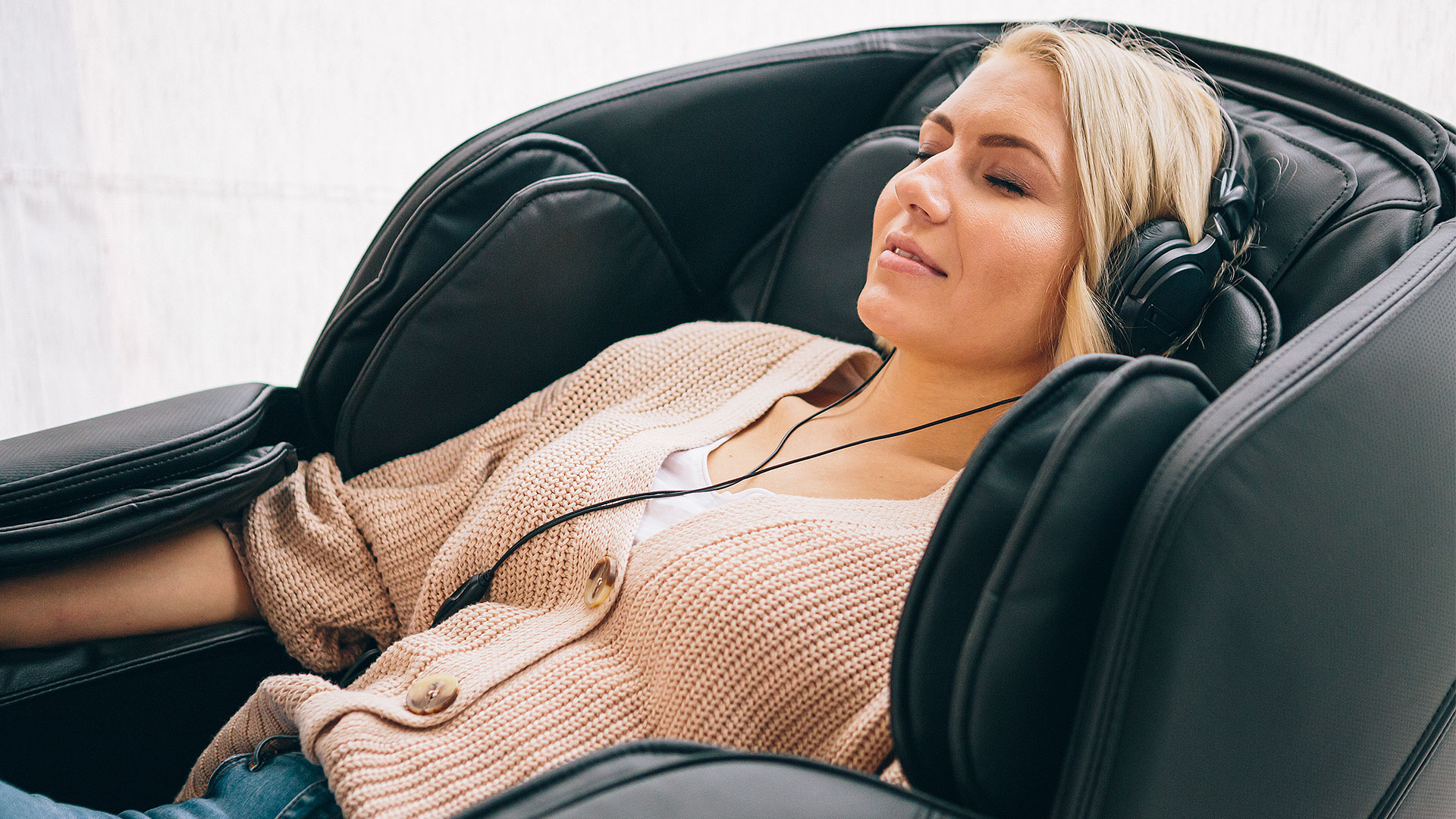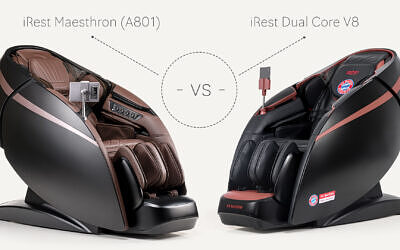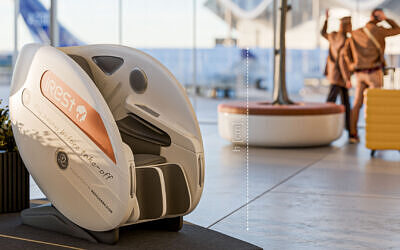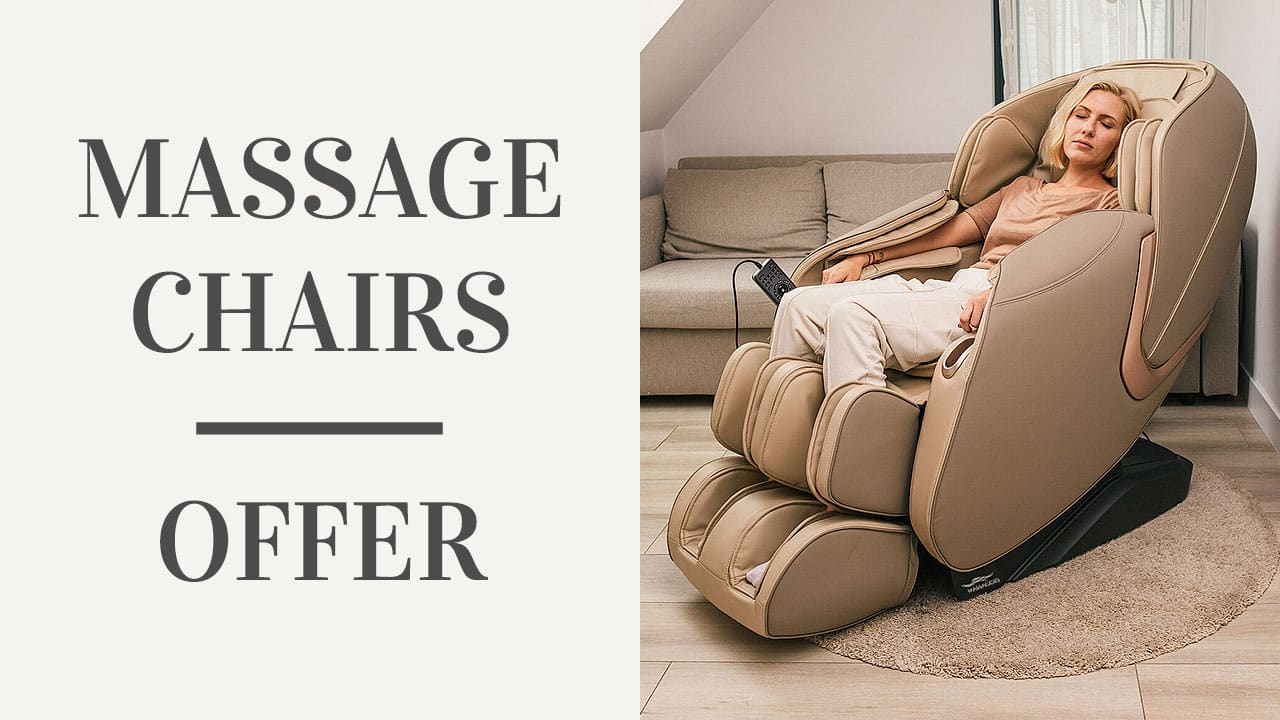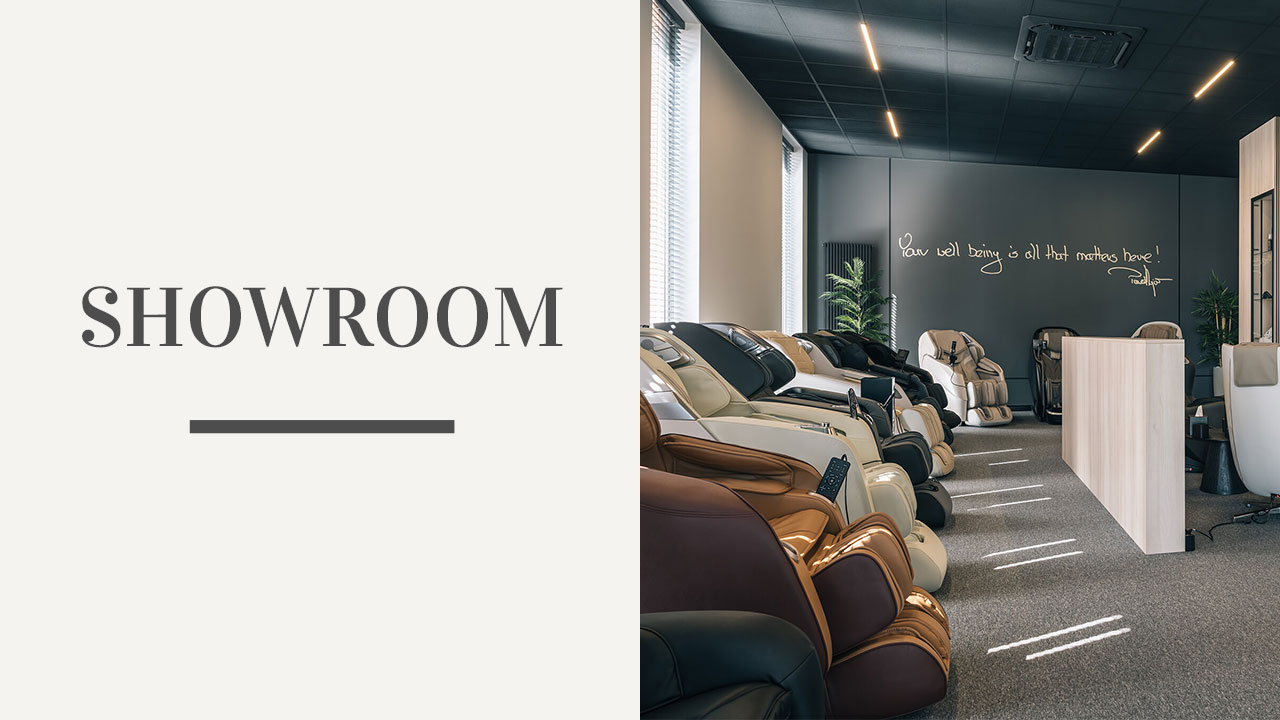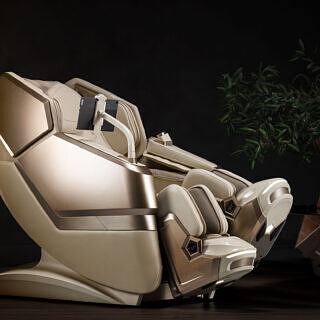Melody, rhythm, harmony – these aren’t just sounds, they are the key to our emotions and well-being. In today’s world, where tension and stress are commonplace, we all seek a time to unwind. It’s worth considering how music affects our body. Does it just soothe our mind, or is it something much deeper? And how does a massage chair fit into all of this?
THE EFFECT MUSIC HAS ON PEOPLE
Music is mankind’s universal language and it has an astonishing effect on our bodies. Certain sounds are capable of evoking specific emotional responses, influencing our mood, physiology and even inducing states of deep relaxation. Certain melodies can speed up the heartbeat, thereby increasing adrenaline levels, while other, mellow tunes can contribute to lowering stress levels and relieving muscle tension. Furthermore, music can affect our cognitive abilities, improving concentration, creativity and memory. Thanks to this extraordinary ability of sounds to penetrate the deepest recesses of our psyche, music has become an indispensable tool in the process of learning or relaxation.
AT WHAT FREQUENCY DOES THE HUMAN BRAIN OPERATE?
There are five types of brain waves (alpha, beta, gamma, delta, theta), where specific frequencies largely account for certain states of human consciousness. For example, theta waves (4-8 Hz) are typical of meditation, trance, hypnosis, intense dreaming, powerful emotions. Other waves are associated with states of relaxation, rest, sleep or come into play during fast learning techniques or motor activities1.
HUMAN HEARING RANGE
The sounds that humans hear consist of 2 elements. The first is the pitch, i.e. the frequency of the sound – value measured in Hertz (Hz). This determines the number of vibrations per second. The sounds that most of us hear fall between 20 Hz and 20 000 Hz. Human speech and music are assigned the range between 400 Hz and 4 000 Hz – this is also considered to be the most pleasant. The second element is sound intensity, measured by the sound pressure level – the value is recorded in decibels (dB) and determines the pressure with which sound waves hit our eardrums. When the pressure increases, the loudness of the sound increases. 0 dB is the threshold of hearing, ordinary, relaxed conversation is around 50 dB and sounds above 90 dB cause discomfort. The sounds we hear result from the changes in air pressure and vibration that the ears perceive. When the receptors in the ears transmit these to the brain, interpretation and differentiation takes place2.
MUSIC THERAPY – HOW IT AFFECTS THE BODY AND MIND
Music has been our companion since ancient times and its beneficial effect on the human body was recognised even then. The first records of the connection between music and medicine can be found as far back as the Bible and the Old Testament. There we read that David played the harp to get rid of evil spirits and soothe Saul, who was suffering from depression3. As years went by, music was and still is a subject of interest for scientists. As Emilia Paszkiewicz-Mes writes in her article:
Music therapy is a well-established form of treatment and it’s been used in various fields of medicine. The term derives from the Greek word ‘mousike’ and the Latin ‘miusica’, which means music, the art of singing and playing instruments. The second term ‘therapeucin’ means healing in a more general sense4.
The World Federation of Music Therapy states that music therapy:
means the use of music or its elements (sound, rhythm, melody and harmony) by the music therapist and the patient/client or group in a process designed for or to facilitate communication, learning, mobilisation, expression, physical, emotional, intellectual and cognitive concentration in order to nurture inner potential and to develop or rebuild the individual’s functions so that he or she can achieve better intra- and interpersonal integration and, consequently, a better quality of life5.
BUT WHAT DOES A MASSAGE CHAIR ACTUALLY HAVE TO DO WITH ALL THIS?
Today, almost every massage chair comes equipped with speakers. Starting from the most basic to the most sophisticated, with a bass-reflex system, full-range stereo sound produced by a DSP processor, as in the Fujiiryoki JP4000. Thanks to the speakers and Bluetooth technology, massage in the chair can be performed with your favourite music in the background, which adds a unique dimension to relaxation. The massage chair’s speakers can be paired with a phone, for example, and connect to an app that plays your preferred playlist of songs or audiobooks. We recommend symphonic movie scores ;) Alternatively, you can launch one of the many widely available phone apps to help you relax or fall asleep. It allows you to listen to specific frequencies. However, it is worth knowing that a similar, more extensive option is offered by technologically advanced massage chairs.
DEDICATED MASSAGE PROGRAMMES
Listening to music in a massage chair is just one of the possibilities. The latest massage chairs offer much more. Bodyfriend Phantom Rovo or its ‘brother’ Bodyfriend Quantum are excellent examples of this. In addition to extremely advanced technology, numerous massage techniques, these excellent Korean chairs also offer special programmes that have a positive effect on your well-being. Unique massage modes featured in the Phantom Rovo and Quantum combine massage and therapeutic binaural music (3-8 Hz) – fitting into the theta waves range, they enhance brain performance. Binaural sound is the third sound signal that is created in the brain when sounds of different frequencies reach each ear. This third signal aligns with the brain waves to allow the body a deeper level of relaxation, as well as increase concentration levels.
Listen to an extract from the first recording.
Brain Massage and Mental Massage are unique massage modes, often combined with music, binaural sounds and affirmations that serve specific purposes. For instance, during a massage session you can listen to the relaxing sounds of nature, pleasant binaural beats or have an exclusive ‘therapist’ whispering directly into your ears in a soft, warm voice. This allows you to take a moment to reflect, put your worries behind you, exercise your mindfulness or focus on the here and now; in short, the Mindfulness in practice.
Listen to an extract from the second recording.
Therefore, Brain Massage offers 7 massage programmes designed to boost brain activity through healing music, voice instructions, teaching correct breathing and promoting muscle relaxation. They are designed to increase concentration, reduce stress, relax the mind, activate brain functions after sleep or help to calm down and get rid of difficult emotions.
Meanwhile, with Mental Massage, you will experience 8 unique massage programmes intended to improve emotional stability. These are recommended for people who feel depressed, need consolation, want to regain self-esteem, reflect on aspects of their daily life or need peace of mind regarding difficult past events.
OPERATION AND VOICE CONTROL
The massage chair’s built-in speakers can also act as an intermediary in the human-massage chair interaction. Some of them, like the Fujiiryoki JP4000 mentioned above, feature an option to read aloud selected functions. It also suggests what else can be changed in terms of the chair’s settings. The iRest Brillactiq (A665) massage chair, on the other hand, has a built-in Voice Control function that allows us to control the chair using specific voice commands. It lets you turn the massage on or off, select your favourite programme or massage position.
A massage in a massage chair appears to be a wonderful experience in itself. And enjoying the symbiosis created with the sound is a way of taking relaxation to another dimension… It’s a kind of gift for our sense of hearing, enhancing the feeling of relaxation. Thanks to this combination, not only will we reduce muscular tension, but we will also positively affect our harmony and inner peace, i.e. our general well-being. SOMA (the physical aspect of health), PSYCHE (the mental aspect) and even POLIS (the spiritual-social aspect). Visit our showroom and see for yourself!
References:
- https://pl.wikipedia.org/wiki/Fale_m%C3%B3zgowe, [access:19.09.2023] ↩︎
- Zakres słyszalności człowieka – jakie częstotliwości słyszymy?, https://twojsluch.com.pl/zakres-slyszalnosci-czlowieka-jakie-czestotliwosci-slyszymy/, [access:19.09.2023]. ↩︎
- T. Natanson, Wstęp do nauki muzykoterapii. Ossolineum, Wrocław, 1979. ↩︎
- E. Paszkiewicz-Mes, Muzykoterapia jako metoda wspomagająca leczenie, Hygeia Public Health, 2013, s. 168-176. ↩︎
- W. Szulc, Muzykoterapia jako przedmiot badań i edukacji, UMCS, Lublin, 2005. ↩︎
